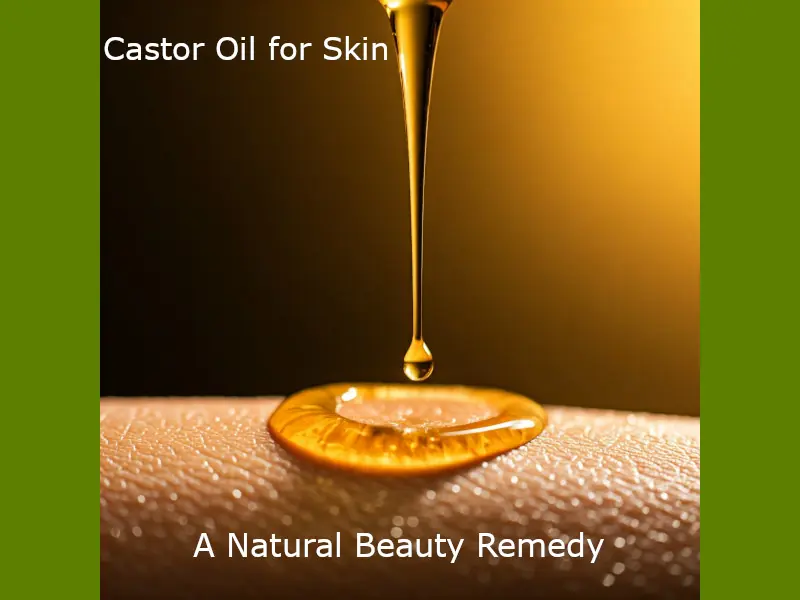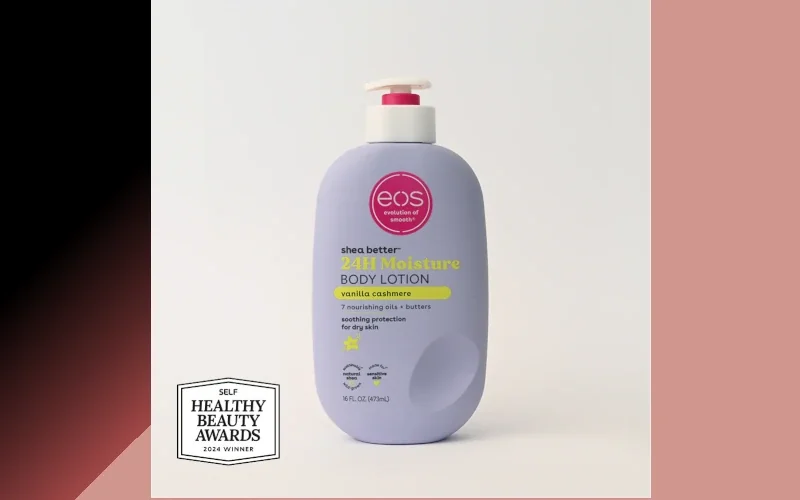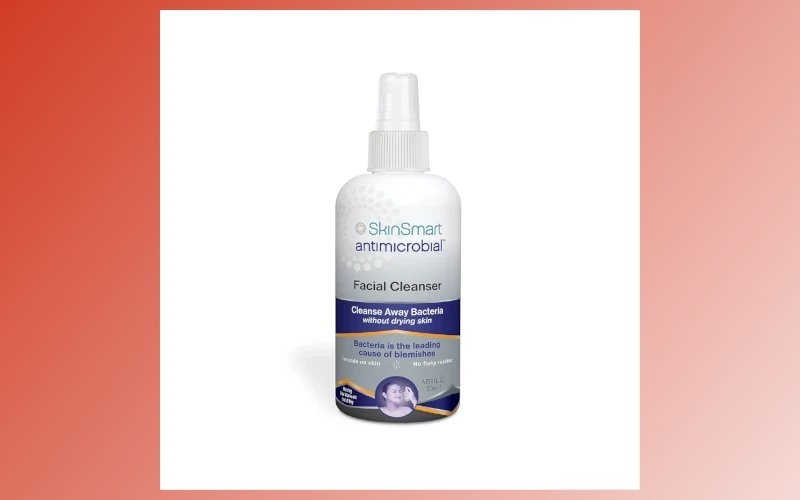The Discovery of LED Technology and Its Journey to Skincare
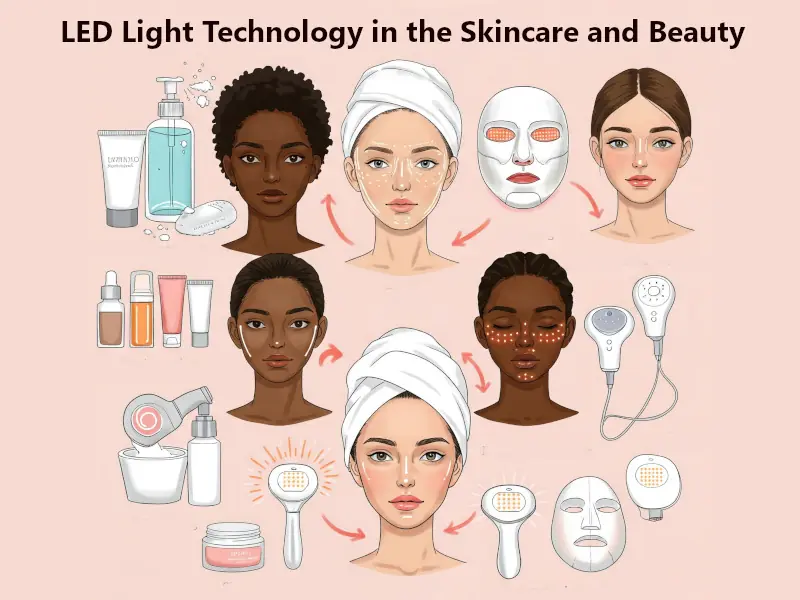
Imagine a world where tiny lights that blink on your TV remote or light up your phone screen could also enhance your skin’s appearance. This fascinating journey of LED light technology began in the realm of electronics and made its way to our skincare routines. Join us as we explore the captivating history of LED light technology in the skincare and beauty industry.
Have you ever wondered how those cool LED masks and wands became so popular for things like fighting acne and smoothing wrinkles? It’s a tale that involves curious scientists, space exploration, and a clever evolution of LED therapy from medical to aesthetic uses. Understanding this journey isn’t just about knowing a fun fact; it can actually help you appreciate how much research and innovation goes into the skincare tools we use today.
Prepare to discover how a simple electronic component transformed from electronics to dermatology. We will delve into the early days of light therapy, highlight the pivotal moment of Nick Holonyak Jr.’s discovery of LED skincare applications, and discuss how this technology transitioned from labs and hospitals to home skincare tools. This story illustrates how ideas from various fields can converge in unexpected ways.
The Birth of Light Emitting Diodes
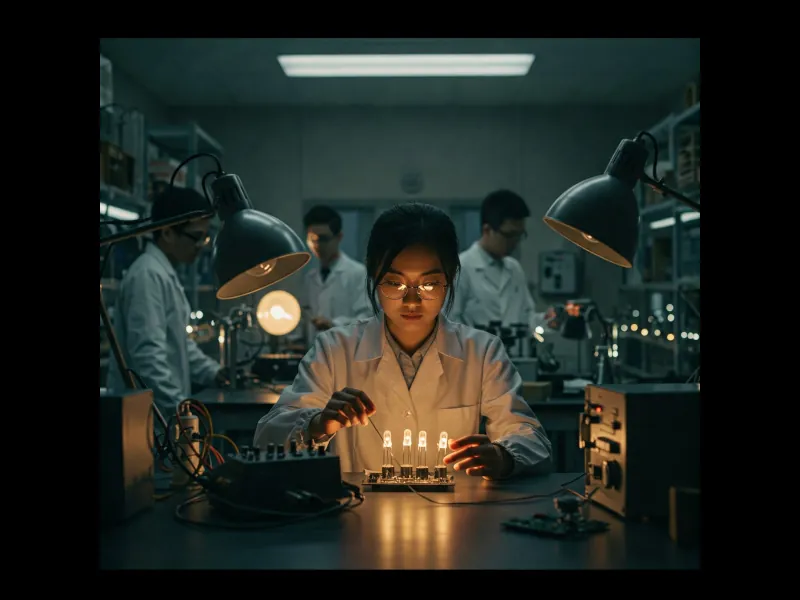
Our story starts in 1962 with a bright idea from scientist Nick Holonyak Jr.. He was trying to create a special kind of light using a semiconductor material, similar to what powers your electronics. This innovation led to the creation of the first practical LED that emitted visible light. Surprisingly, it was a vibrant red!
Fun fact: he was actually trying to create a semiconductor laser, but instead, he stumbled upon something equally amazing: the first practical LED that gave off visible light. And guess what color it was? A vibrant red! This was a huge moment in the LED technology development timeline for skin treatments, even though no one knew it at the time!
Fun fact: Nick Holonyak Jr. aimed to create a semiconductor laser but instead developed the first practical visible light LED.
Think of a semiconductor as a pathway for tiny particles called electrons. When powered, these electrons get excited and meet “electron holes,” releasing energy as light. The color of this light depends on the semiconductor material used.
Now, these early LEDs weren’t exactly going to light up a stadium or power a disco ball. They were pretty low in brightness and could mostly only shine in that single red color. It was like having a flashlight with a very dim red glow. So, what were these little red lights used for back then? Mostly as indicator lamps, like the tiny red light that tells you if your TV is on standby, or in simple digital displays, like the numbers on an old calculator. These were the original intended applications in electronics and displays.
Initially, these LEDs were not bright enough to light up a stadium. They produced a low brightness, primarily emitting red light, used as indicator lamps in electronics.
It wasn’t until the early 1990s that a team of brilliant scientists, Shuji Nakamura, Hiroshi Amano, and Isamu Akasaki made a groundbreaking invention: the efficient blue light-emitting diode. This was a game-changer! Why? Because by combining red, green, and blue light, you can create almost any color, including white light. This opened up a whole new world of possibilities for LEDs, from super-efficient light bulbs to the vibrant screens we see on our phones and TVs today. This timeline of colored LED development from red to blue and beyond was crucial, setting the stage for the future, including the surprising journey of LEDs into the world of skincare.
Shining a Light on Healing: Early Steps in Photobiomodulation

Even before LEDs, scientists were intrigued by how light might affect living organisms. In the 19th century, researchers discovered that certain light types could aid healing processes. They noted a parallel to how plants grow towards sunlight, indicating light’s power over living tissues.
One of the pioneer researchers in this area was Niels Finsen, who was even awarded a Nobel Prize in Medicine in 1903 for using light therapy (then called “photo therapy”). He used different types of light to treat illnesses. This was a really important step in understanding the original medical uses of LED light therapy, even though LEDs themselves weren’t around yet! These early therapeutic light sources, however, likely had limitations in terms of how focused the light was and maybe even some side effects we understand better today.
Fast forward to the 1960s: Hungarian doctor Professor Endre Mester discovered that low-level laser therapy could accelerate wound healing and promote hair growth. This key moment showcased light’s ability to induce biological changes without heat.
Like any new idea in science, there was early skepticism and the challenges of scientific acceptance. People weren’t always sure how this light was working, and it took time and more research to prove that these photobiomodulation effects were real and reliable. It’s like introducing a new superhero – at first, people might not believe their powers until they see them in action! However, the early investigations laid the groundwork for the exciting applications of LED light therapy we see today.
The Medical Research Breakthrough Period

The journey of LED light into medicine began with scientists investigating its healing potential. Researchers documented a guide on the uses of LED light therapy.
One significant focus was wound healing. Remember how Professor Mester observed that low-level laser light accelerated wound closure? Researchers explored whether LED light could have similar effects.
Wound healing research continued to produce compelling results. Studies showed that specific wavelengths of LED light could accelerate the closure of wounds and reduce inflammation. For example, some research indicated that red and near-infrared LED light could significantly speed up healing after surgical procedures. These findings provided more scientific credibility to the idea that LED light wasn’t just a fancy gadget, but could actually influence the body’s healing processes.
Beyond wound healing, researchers also began to explore pain management applications. As early as the 1960s in Eastern Europe, phototherapy (which later included LED therapy) was being used for conditions like chronic pain and arthritis. This early adoption, alongside new studies exploring how LED light could affect nerves and reduce inflammation, expanded clinical interest in the technology.
The Transition to Dermatological Applications
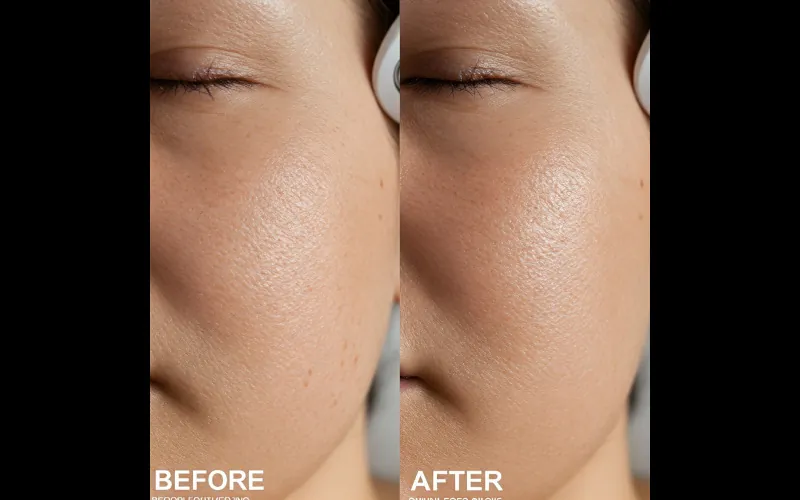
The journey of LED light therapy, from its initial medical applications to the field of dermatology, involved pioneering efforts by researchers and clinicians who recognized its potential for treating various skin conditions and achieving aesthetic improvements.
First dermatologists to explore LED for skin conditions
We don’t know exactly who the first dermatologists to use LED therapy were, but as research showed it helped heal wounds and ease pain, dermatologists started looking into how it could help with skin problems. In the 1980s, red and infrared light therapy showed improvements in cosmetic skin conditions, sparking more interest in its use for dermatology.
Initial skin conditions treated with LED therapy
The early dermatological applications of LED therapy focused on conditions like acne and wound healing. Blue light was recognized for its potential to target Propionibacterium acnes, the bacteria involved in acne, while red and near-infrared light showed promise in accelerating tissue repair and reducing inflammation.
Documentation of effects on collagen, acne, and inflammation
Research played a crucial role in documenting the biological effects of LED light on the skin:
- Collagen: Pioneering studies demonstrated that specific wavelengths of LED light positively impacted collagen production, a vital protein for skin elasticity. This discovery was a turning point for anti-aging interventions.
- Acne: Clinical trials revealed the effectiveness of blue light LEDs in targeting and destroying acne-causing bacteria. Some studies also explored the benefits of red light alone or in combination with blue light for acne treatment.
- Inflammation: Both clinical observations and research indicated that LED light could reduce inflammation in various skin conditions and accelerate the healing process. Dr. Jared Jagdeo explains that photobiomodulation triggers reactions in the skin that can result in, among other things, changes related to oxygen and fibroblast stimulation.
Key opinion leaders who championed LED in dermatology
Researchers like Dr. Jared Jagdeo, who has co-authored significant research on the skin benefits of LED since 2008, and clinicians who conducted early clinical studies played a vital role in building the evidence base and advocating for its use.
The mention of dermatologists and medical professionals underscoring the value of LED technology in modern skincare also suggests a growing acceptance and championing of the technology within the field. Furthermore, the development and promotion of devices like Omnilux™ by companies like GlobalMed Technologies, often in collaboration with medical professionals, also contributed to its adoption.
Early clinical protocols for aesthetic outcomes
As the anti-aging and skin-rejuvenating potential of LED became apparent, early clinical protocols for aesthetic outcomes began to emerge. These often involved the use of red and near-infrared light to improve skin texture, reduce fine lines and wrinkles, and enhance overall skin tone.
Treatment parameters like wavelength, fluence, power density, and session length were explored and refined through ongoing research and clinical experience. The development of multi-wavelength LED devices allowed practitioners to target multiple skin concerns simultaneously.
Research that bridged medical and aesthetic applications
Much of the research on LED therapy inherently bridged medical and aesthetic applications. For instance, studies demonstrating the stimulation of collagen production had implications for both wound healing (a medical application) and anti-aging (an aesthetic application). Similarly, the understanding of LED’s anti-inflammatory effects was relevant for treating inflammatory skin conditions (medical) and reducing post-procedure redness (aesthetic).
The fact that LED therapy was initially a healing modality in medical settings before transitioning to the cosmetic world underscores this bridge. NASA’s early wound healing experiments, for example, laid the groundwork for understanding its regenerative potential relevant to both medical and aesthetic dermatology.
The transition was gradual, fueled by scientific discoveries, clinical observations, and the development of increasingly sophisticated LED devices. The continued research and positive outcomes solidified LED therapy’s place as a valuable tool in both medical and aesthetic dermatology.
The Evolution of Professional Aesthetic Devices

The evolution of professional LED aesthetic devices marks a significant shift in how skincare treatments are delivered, moving from early medical applications to sophisticated systems designed for cosmetic enhancements.
- First-generation professional LED systems for aesthetics: Following the initial medical research that demonstrated the benefits of LED therapy for wound healing and skin conditions, the first generation of professional LED systems for aesthetics emerged. These systems likely adapted the wavelengths and power densities used in medical settings for cosmetic purposes such as anti-aging, acne treatment, and skin calming. The Omnilux™ device (GlobalMed Technologies) is highlighted as a phototherapy device that has demonstrated beneficial effects across a range of clinical and cosmetic applications, suggesting it was among the earlier professional systems available. These early systems often utilized specific wavelengths like blue (415nm), red (633nm), and near-infrared (830nm), based on their documented effects on skin biology.
- Technical specifications and treatment approaches: The technical specifications of these first-generation professional devices would have focused on delivering specific non-thermal wavelengths of light to the skin. Treatment approaches involve exposing the targeted skin area to these lights for a certain duration and frequency. For instance, blue light was used to target P. acnes bacteria in acne treatment, while red light aimed to stimulate collagen production and reduce inflammation. The devices likely consisted of panels or arrays of LED bulbs designed to cover larger treatment areas, such as the entire face. The proximity of the light-emitting diodes to the skin’s surface was recognized as crucial for optimal results.
- Business models that made LED accessible to aestheticians: The transition of LED technology into the aesthetic market involved developing business models that catered to salons, spas, and aesthetic centers. Companies like GlobalMed Technologies (with Omnilux™) played a role in this by offering professional-grade equipment. The fact that aestheticians began using LED light therapy to help regenerate the skin from aging and treat acne indicates that these devices became accessible through direct sales to businesses or potential leasing agreements. The integration of LED treatments into service menus by these establishments demonstrates a business model centered around offering these technology-driven skincare solutions to clients.
- Training protocols and certification development: As professional LED systems became more prevalent in aesthetic practices, training protocols would have been necessary to ensure safe and effective use. These protocols likely covered understanding the different wavelengths and their applications, proper treatment durations and frequencies, and safety guidelines. Always seeking guidance from skincare professionals on selecting reliable devices implies the importance of professional knowledge and training. Licensed aestheticians and dermatologists performing LED light therapy also suggest a level of professional training involved.
The Consumer Market Development
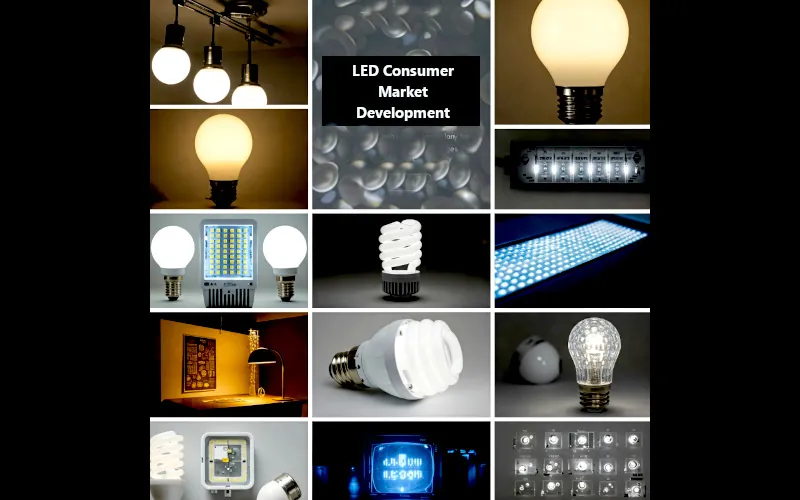
The development of the consumer market for LED devices marked a significant expansion of this technology beyond professional settings, bringing light therapy into people’s homes. However, this transition faced several barriers and evolved considerably over time.
- Barriers to developing effective consumer devices: Several factors posed challenges in creating effective LED devices for home use.
- Efficacy vs. Affordability: Achieving the density and quality of LED diodes (“bulbs”) necessary for efficacy while keeping the price point accessible to consumers was a significant hurdle. Experts suggest that LED devices retailing for less than $200 or $300 might not be worth it, indicating a correlation between quality and cost.
- Skepticism and Low-Quality Products: The market became riddled with fakes or ineffective, low-quality versions, exploiting consumer skepticism regarding whether these devices were more than just “red flashlights”. This made it difficult for consumers to discern effective products from those that were not.
- Validation and Regulation: Ensuring the safety and efficacy claims of at-home devices were accurate was another barrier. Unlike drugs that require FDA approval, devices only get FDA clearance, which confirms the accuracy of wavelength claims.
- First-generation at-home devices and their limitations: The first generation of at-home LED devices likely mirrored the basic principles of professional systems but with lower power output and smaller treatment areas. Handheld wands and basic masks were among the early formats. Limitations included:
- Lower Efficacy: Due to fewer and potentially lower quality LEDs, their efficacy may have been less pronounced than that of professional treatments.
- Single Wavelengths: Early devices might have primarily focused on single wavelengths, limiting their ability to address multiple skin concerns simultaneously, unlike some later multi-wavelength devices.
- Engineering challenges in creating affordable technology: Engineering affordable yet effective LED technology for consumers involved several challenges:
- Cost-Effective Diode Production: Manufacturing high-quality LED diodes at a cost that allowed for a reasonable retail price was crucial.
- Power and Heat Management: Designing devices with low energy output to ensure safety for home use while still delivering therapeutic doses of light requires careful engineering.
- User-Friendly Design: Creating devices that were easy and comfortable for consumers to use and incorporate into their daily routines was essential for adoption. This included factors like portability, wireless operation, and simple controls.
- Key companies that pioneered consumer applications: Here are some earliest pioneers in the consumer LED device market who were involved in LED light therapy devices.
- Brands like Tanda Zap, Illumask (Neutrogena/Johnson & Johnson), and Omnilux are mentioned as having FDA-cleared LED treatments for acne, indicating their presence in the early consumer market.
- TheraFace is highlighted as a multitasking handheld device with LED lights, suggesting innovation in combining modalities for at-home use.
- LED Esthetics, founded in 2020, aims to develop affordable, professional-grade at-home LED therapy devices, indicating a continued drive toward accessible consumer solutions. Their Glotech™ product line represents a more recent development in this market.
- reVive Light Therapy™ is mentioned in the context of at-home devices emitting infrared, red, and amber light for anti-aging, indicating another company catering to the consumer market.
- How consumer feedback shaped product evolution: Consumer feedback likely played a significant role in shaping the evolution of at-home LED devices:
- Demand for Convenience and Multitasking: The popularity of handheld devices that could be used while watching TV suggests that consumer desire for convenience and multitasking influenced product design.
- Need for Multi-Benefit Devices: Vargas’s preference for multitaskers with red, blue, and infrared lights indicates that consumer interest in addressing multiple skin concerns with a single device drove the development of multi-wavelength systems.
- Desire for Portability and Ease of Use: The introduction of portable and at-home LED devices with smart features and customizable treatments reflects a response to consumer demand for user-friendly and integrated skincare solutions.
- Focus on Specific Concerns: The development of devices like the Glotech™ Acne Wand and Glotech™ Lip Wand suggests that companies respond to consumer feedback by creating targeted solutions for specific skin issues.
- Market education and adoption challenges: Educating consumers about the science and benefits of LED therapy and encouraging adoption faced several hurdles:
- Overwhelming Skincare Promises: Consumers are bombarded with numerous skincare claims, making it challenging for them to distinguish effective treatments like LED therapy from mere “brand hype and marketing wizardry”.
- Skepticism and Misinformation: Overcoming the perception of LED devices as glorified flashlights and addressing misinformation about their efficacy required consistent and clear education.
- Understanding Wavelengths and Benefits: Consumers need to understand that different wavelengths of light target specific skin concerns (e.g., blue for acne, and red for anti-aging) to make informed purchasing decisions.
- Distinguishing Quality Products: Helping consumers differentiate between effective, potentially higher-priced devices and cheaper, less effective alternatives remained a challenge. Endorsements from experts and FDA clearance became important markers of quality.
Despite these challenges, the consumer market for LED devices has grown significantly, driven by technological advancements, increasing awareness of light therapy benefits, and the desire for convenient and non-invasive at-home skincare solutions.
The Skincare Integration Phase
LED therapy has seamlessly integrated into comprehensive skincare routines by being recognized not as a standalone solution but as a powerful adjunct to existing regimens. This integration was facilitated by the understanding that LED therapy could amplify the benefits of other skincare treatments.
The development of pre-and post-LED skincare products further solidified this integration. Certain products are formulated to enhance the efficacy of LED treatments. For instance, LED Esthetics developed light therapy-optimized serums like the Biocell Copper Peptide Serum, known for its skin-repairing and anti-inflammatory properties, which can boost collagen production and amplify rejuvenation when applied before LED therapy. Similarly, their Vitamin C Ageless Complex is designed to brighten skin and reduce pigmentation, making it an ideal pre-light therapy serum that works synergistically with LED to target dark spots. Hydrogels are also used to create a hydrating barrier that enhances light penetration during LED therapy. Conversely, general expert advice suggests saving serums and sunscreen after an LED session to prevent impeding light penetration.
Clinical validation of combined approaches supports this integrated use. Professional LED light therapy is often used in conjunction with other skin therapies, such as microdermabrasion, to achieve more dramatic results. Studies have even assessed the efficacy of combining blue and red light therapy with microdermabrasion for acne treatment.
Expert protocols integrating products and light often recommend starting with clean, makeup-free skin to ensure optimal light penetration. Some experts advise applying a serum or treatment before LED sessions to enhance absorption and efficacy. For acne treatment, cleansing the skin before each LED session and pairing it with gentle, acne-friendly skincare products like non-comedogenic moisturizers is recommended. While some light-activated serums are designed for pre-treatment, it is generally advised to avoid using light-sensitive ingredients like retinoids immediately before or after LED therapy. After LED therapy, continuing with a regular skincare routine, including hydrating with a non-comedogenic moisturizer and protecting the skin with SPF, is crucial.
Consumer education about combined treatments is vital for successful adoption. Consumers are informed that LED therapy is an addition to, not a replacement for, their existing skincare routine. Educational content, such as blog posts, provides tips on how to incorporate at-home LED devices, emphasizing a slow introduction, adherence to manufacturer guidelines, consistency, and the continuation of a balanced routine. Furthermore, consumers are educated on how specific products, like the LED Esthetics serums and hydrogels, can enhance their light therapy results by preparing the skin and optimizing light absorption.
The Social Media Effect and Modern Adoption

Social media has significantly accelerated consumer awareness of LED therapy for skin care. The visual nature of LED devices, such as illuminated wands and glowing masks, lends itself well to platforms like Instagram and TikTok, creating a strong visual impact that captures attention.
The role of celebrities and influencers in popularization cannot be understated. Seeing well-known personalities use and endorse LED devices builds trust and generates widespread interest among their followers. For instance, the popularity of devices seen on social media, like the Solawave 4-in-1 Advanced Skincare Wand, is directly linked to their presence on platforms like Instagram.
The visual nature of LED, creating “Instagram moments,” is a key factor in its social media success. The striking imagery of users undergoing LED treatments – the bright lights and futuristic-looking masks- naturally translates into engaging content that is widely shared and discussed. This creates organic visibility and helps normalize LED therapy as part of a modern skincare routine.
You may find successful consumer education through brand-owned content, which is often disseminated through social media channels. For example, LED Esthetics uses its blog to educate consumers about the benefits of LED light therapy for various skin concerns like anti-aging and acne treatment. They also highlight their Glotech™ product line and explain how each device addresses specific needs. Similarly, reVive Light Therapy™ uses its blog to explain the science behind how light rejuvenates and heals skin and directs readers to its product line.
Takeaway
The journey of LED therapy for skin care is a remarkable interdisciplinary one, stemming from early light therapy research, including NASA‘s work on wound healing. Its evolution involved medical professionals observing healing properties, scientists demonstrating effects on collagen and acne bacteria, and engineers developing the technology. This cross-pollination of knowledge, spanning medicine, science, and technology, laid the groundwork for its cosmetic applications.
Understanding this history empowers consumers to make informed choices by recognizing the scientific basis of LED therapy for anti-aging, skin calming, and acne. Knowing that efficacy often correlates with device quality and price helps navigate a market with variable products. The innovation lessons from LED’s evolution include the shift from single to multi-wavelength devices, the incorporation of pulsating light, and the development of portable, at-home systems, making professional-grade treatments more accessible.
Future milestones may include the integration of AI for personalized treatments, further research optimizing treatment parameters, and the establishment of standardized protocols for a wider range of skin conditions. Ultimately, the transformation of LED therapy into a skincare revolution highlights the power of cross-industry collaboration between researchers, medical professionals, technology developers, and the beauty industry. This collaboration has translated scientific findings into accessible consumer products, fundamentally changing how people approach skin health and rejuvenation.
Source:
- Light-emitting diode history by Wikipedia
- A History of Photobiomodulation or Light Therapy by SYMBYX Biome
- History of LED Light Therapy by NB Medical
- Light‐emitting diodes in dermatology by Pub Med Central
- Phototherapy with Light Emitting Diodes by PubMed Central
- Light Therapy Market Size & Growth Analysis Report 2030 by Grand View Research
- The Best LED Skin-care Devices expert recommendations by The Strategist
- Unlocking the Power of Light on the Skin: A Comprehensive Review on Photobiomodulation by PubMed Central
- LED Light Therapy for Skin: What to Know by HealthLine
- History and development of led technology for rejuvenation by Skin Impact Ltd
Trust in your purchase:
Every product featured on our site has been carefully researched and selected based on quality, customer ratings, and positive reviews to ensure you receive excellent value for your money.
Please note:
This post contains affiliate links. If you make a purchase through these links, we may earn a small commission at no additional cost to you. This helps support our site and allows us to continue bringing you valuable content. Thank you!
Thank you for your precious time spent with AestheticThrive.

